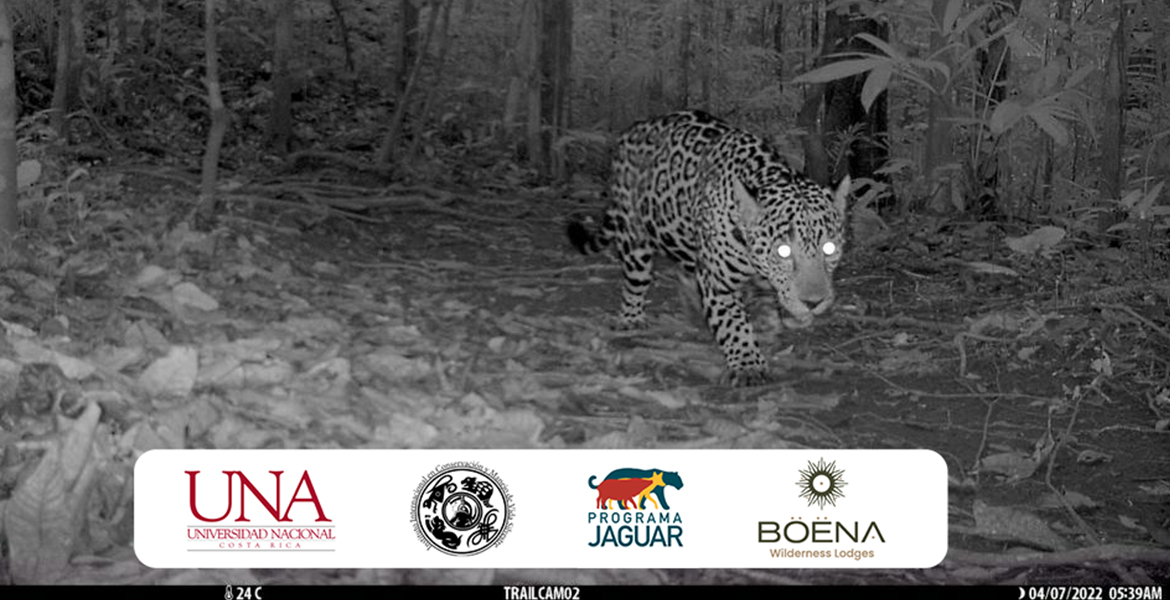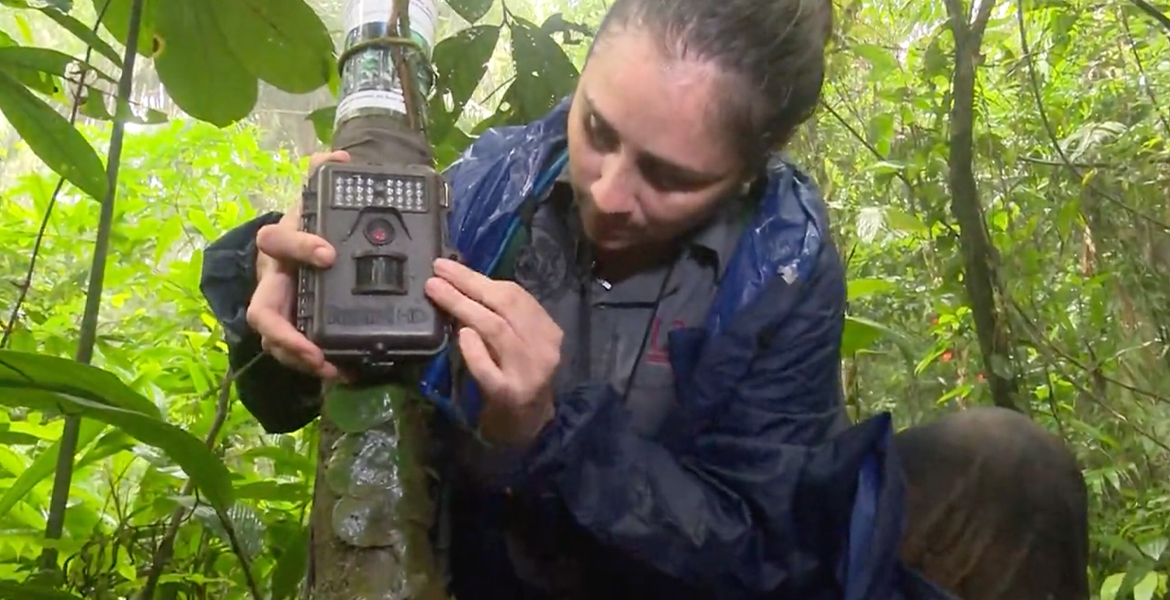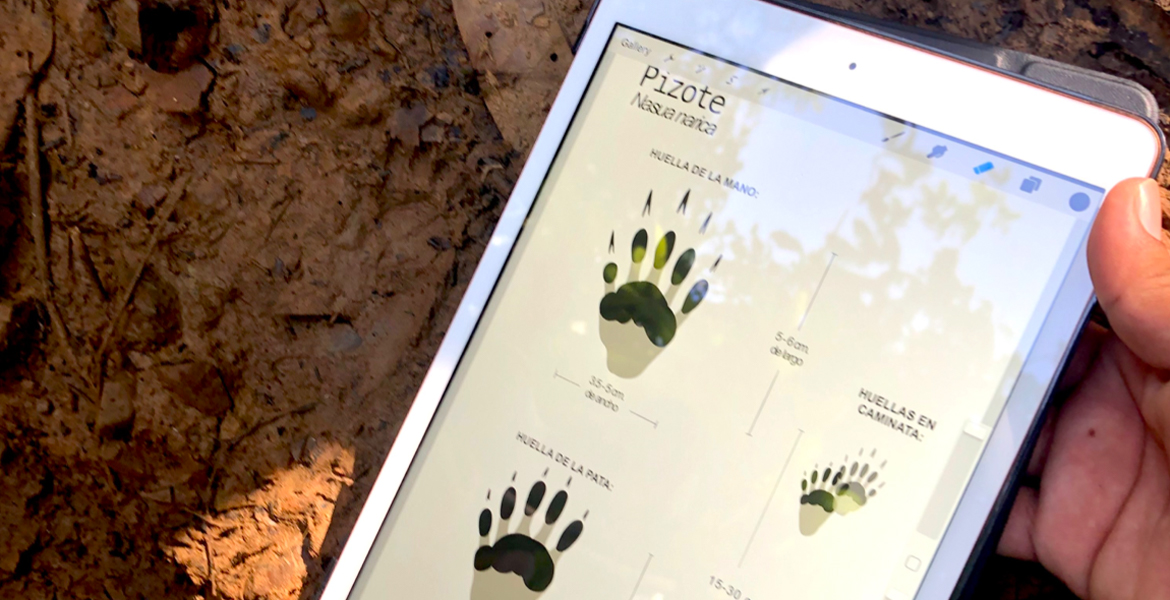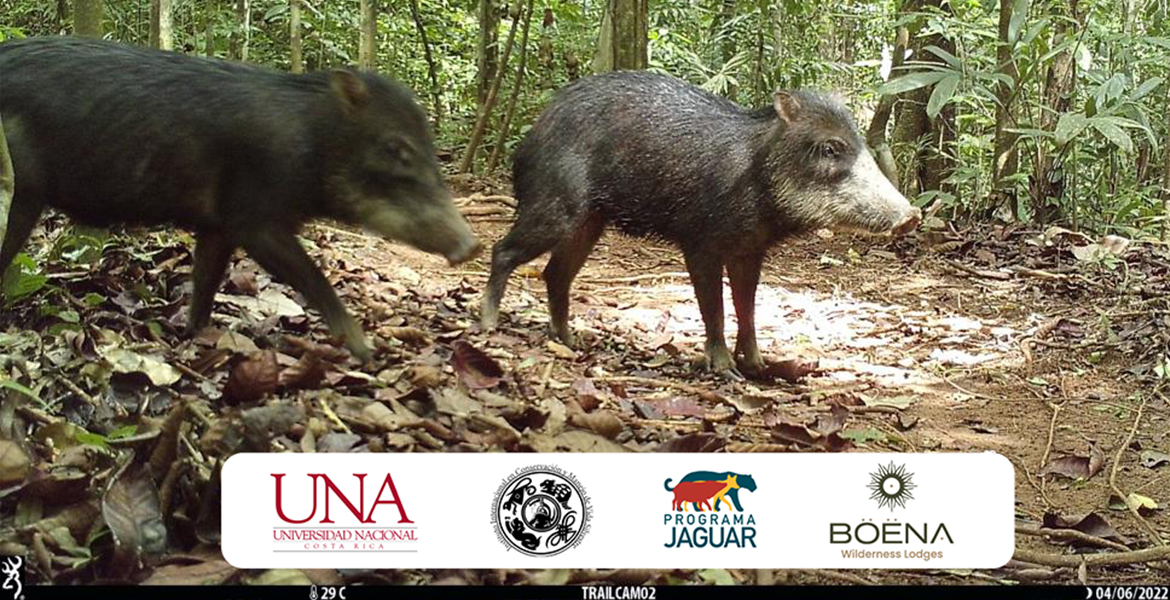Jaguar Project

Jaguar Project.
Since 2009, Böëna Wilderness Lodgess has supported the Jaguar Program through Pacuare Lodge, and more recently through Lapa Rios research actions starting in 2020. In addition to providing the researchers with food and lodging, we support cameras and equipment needed for their expeditions including tent camps, batteries for the cameras, and support with local guides.
According to Roberto Fernández, founder and co-owner of Böëna Wilderness Lodgess, this collaboration is a result of his growing concern about conservation and the environment. “During more than 30 years of contact with the Pacuare’s amazing natural beauty, I’ve felt a need to contribute to the preservation of its ecosystems. It is as if the river were constantly reminding me of the importance of doing something to relieve the environmental problems that we are causing,” he said. The largest feline in the Americas, the jaguar was once common from the southwest United States to northern Argentina, but it has been eliminated from more than half of its original range during the past century. Those spotted cats continue to be threatened by hunters and ranchers in Costa Rica, where they are increasingly restricted to isolated protected areas that are too small to sustain their species.
According to Carlos Manuel Rodríguez, Regional Vice-President of Conservation International, the study site lies in an essential area for jaguar conservation within the Mesoamerican Biological Corridor, since it is between the vast wilderness of the Talamanca Cordillera and the forests of Turrialba Volcano.
“The opportunity to support jaguar research is fascinating because it’s such an extraordinary animal,” explained Fernández. “Our hope is that this project will contribute to the development of conservation policies to protect these endangered felines.” “Our philosophy is to give something back to nature, which has given us so much, and to harmonize our activities with nature’s processes,” noted Fernández. “We are trying to educate people, raise awareness, and motivate local communities in order to work together for sustainable development.” Biologist Carolina Saenz has spent years studying Jaguars and other large mammals in the rainforest surrounding the Pacuare Lodge, as part of a research program that is supported by the lodge and guest donations. She has confirmed that the area is home to jaguars and an array of other wildlife. Carolina’s is one of various success stories linked to the Pacuare Lodge’s commitment to conservation and sustainable tourism. It began in 2008, when the Pacuare Lodge teamed up with the International Wildlife Management Institute (ICOMVIS) at Costa Rica’s National Universidad (UNA) for a project to assess the status of jaguars and other large mammals in the rainforest that lines the Pacuare River. Working under the guidance of UNA professor Eduardo Carrillo – one of Latin America’s top jaguar experts – Carolina managed the project, using the resulting data for her master’s thesis. The Pacuare Lodge provided her with room and board, logistical support, 24 camera traps and other equipment. Many guests also made donations, which were used for the purchase of another 32 camera traps and other support for her important research. Since then, we have donated 144 cameras in the Pacuare area and 33 in Lapa Rios area, covering 336km2 in the Pacuare surroundings and 20km2 in Lapa Rios reserve and Corcovado area.
In 2020, Lapa Ríos signed the first agreement with National University, named as "Ecotourism as a tool for conservation, environmental awareness and empowerment of local communities in the Osa Peninsula". With the use of camera traps information was generated about abundance and occurrence of species of terrestrial mammals in different protected areas in the Osa Peninsula. This information will be greatly useful for the upcoming conservation actions and decisions that are to be made not just for the conservation of keystone species in the Osa Peninsula, but for the understanding of the relation between ecotourism and wildlife in the most biologically intense place in the world. Donated cameras traps have been running since December 2020 in the Rainforest that encompasses Lapa Ríos Lodge, in order to generate estimates of abundance from photographic captures using a non-invasive technique.
Jaguars, like most other large rainforest mammals, are extremely shy, so biologists traditionally estimated their populations using tracks, feces and other signs. In recent years, the availability of affordable camera traps with movement sensors has revolutionized wildlife research. National University scientist placed camera traps along game trails in the Pacuare Lodge’s 340-hectare (840-acre) private rainforest reserve, the adjacent Nairí Awari Indigenous Reserve and remote Barbilla National Park. Over the years, she has captured approximately 5,000 photos and videos of mammals there, and 15,000 photos in Lapa Rios rainforest, monitoring over 2 different terrestrial mammals, including the five feline species present in Osa area.
Through the equipment and research over the years, the program has documented that the rainforest surrounding the Pacuare Lodge is home to at least 24 species of large mammal, including five of the six felines native to Costa Rica and other rare species such as Baird’s tapir, the red brocket deer and naked-tailed armadillo. Carolina has used the photos and videos to identify five individual jaguars, since the rosettes – patterns of spots – of any given jaguar are as unique as a fingerprint. These include a rare black jaguar (a.k.a. black panther) a mutation that had only been documented in one other region of Costa Rica.
For Osa area, Jaguars and its preys are often seen in images and videos, representing the positive ecosystem´s health. Carolina explained that a curious aspect of Pacuare forest is that it is difficult to see mammals, but the camera traps confirm that plenty of them live there. Though the difficulty in spotting wildlife is in part due to the exuberance of the forest’s foliage, Carolina suspects that the area’s mammals are especially shy because of hunting. The Pacuare Lodge has worked to end hunting in the area by prohibiting it in the lodge’s reserve, by providing employment for local people and by educating local people about the value of wildlife. The company’s environmental education program works in the eight schools nearest to the lodge, reaching hundreds of children. Jaguars have disappeared from most of their range in Costa Rica, shot or poisoned by ranchers intent on protecting their livestock. Those that remain are primarily found in the country’s national parks and other protected areas, which serve as islands that sustain by restrict the movement of those jungle cats, which once roamed widely throughout the Americas from the southeast United States to northern Argentina. The Pacuare Lodge’s private reserve forms part of a biological corridor between two of Costa Rica’s largest remaining masses of wilderness – the Central Volcanic Cordillera and La Amistad Caribe Conservation Areas – which means it could serve as a pathway for young jaguars to moving to other areas in order to avoid inbreeding. With the help of researchers from Programa Jaguar these data base is taken care of up to date and will be used to assess important ecological questions that can help to take conservation actions.Xxxxxxx:
| Xxxx | : | xxxxxxxx |
| Xxxxx | : | xxxxxx |
| Xxxxxxx | : | xxxxx xxxxx |
| Xxxx | : | xxxxxxxxxxx |
Contact Project:
| Phone | : | +506 4070-0420 |
| Email: | : | support@turrialbaconservation.org |
| Head Quater | : | Barrio Escalante San José, Costa Rica |
MAKE DONATION
You can connect with us:
join Turrialba Foundation, and join our database for more information and updates on our projects.

